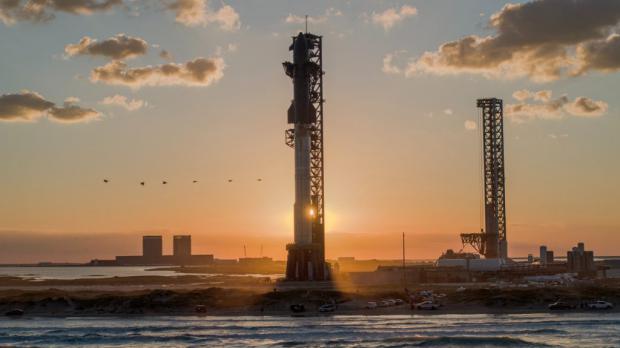
Breaking News
 2008 Crash Prophet Issues URGENT Bubble Warning for 2025 - Maloney
2008 Crash Prophet Issues URGENT Bubble Warning for 2025 - Maloney
 3D Printed Aluminum Alloy Sets Strength Record on Path to Lighter Aircraft Systems
3D Printed Aluminum Alloy Sets Strength Record on Path to Lighter Aircraft Systems
 Bitcoin Surges to $114,777 as Crypto Economy Adds $170 Billion in a Single Day
Bitcoin Surges to $114,777 as Crypto Economy Adds $170 Billion in a Single Day
 'Darker The Better': Daily Cocoa Slows 'Inflammaging' By 70%
'Darker The Better': Daily Cocoa Slows 'Inflammaging' By 70%
Top Tech News
SEMI-NEWS/SEMI-SATIRE: October 12, 2025 Edition
 Stem Cell Breakthrough for People with Parkinson's
Stem Cell Breakthrough for People with Parkinson's
 Linux Will Work For You. Time to Dump Windows 10. And Don't Bother with Windows 11
Linux Will Work For You. Time to Dump Windows 10. And Don't Bother with Windows 11
 XAI Using $18 Billion to Get 300,000 More Nvidia B200 Chips
XAI Using $18 Billion to Get 300,000 More Nvidia B200 Chips
 Immortal Monkeys? Not Quite, But Scientists Just Reversed Aging With 'Super' Stem Cells
Immortal Monkeys? Not Quite, But Scientists Just Reversed Aging With 'Super' Stem Cells
 ICE To Buy Tool That Tracks Locations Of Hundreds Of Millions Of Phones Every Day
ICE To Buy Tool That Tracks Locations Of Hundreds Of Millions Of Phones Every Day
 Yixiang 16kWh Battery For $1,920!? New Design!
Yixiang 16kWh Battery For $1,920!? New Design!
 Find a COMPATIBLE Linux Computer for $200+: Roadmap to Linux. Part 1
Find a COMPATIBLE Linux Computer for $200+: Roadmap to Linux. Part 1
 Bionic hand with NO brain implants?!
Bionic hand with NO brain implants?!
 Nano-cubosome eyedrops target macular degeneration without needles
Nano-cubosome eyedrops target macular degeneration without needles
Starship's Eleventh Flight Test

A live webcast of the flight test will begin about 30 minutes before liftoff, which you can watch here and on X @SpaceX. You can also watch the webcast on the X TV app. As is the case with all developmental testing, the schedule is dynamic and likely to change, so be sure to check in here and stay tuned to our X account for updates.
The upcoming flight will build on the successful demonstrations from Starship's tenth flight test with flight experiments gathering data for the next generation Super Heavy booster, stress-testing Starship's heatshield, and demonstrating maneuvers that will mimic the upper stage's final approach for a future return to launch site.
SpaceX works closely with FAA and international air traffic organizations to efficiently and safely integrate all launch and reentry operations into the airspace. During Starship Flight 10, FAA reopened all affected airspace within 9 minutes, with some portions reopening within 7 minutes, and there was no meaningful disruption to air traffic.
The booster on this flight test previously flew on Flight 8 and will launch with 24 flight-proven Raptor engines. Its primary test objective will be demonstrating a unique landing burn engine configuration planned to be used on the next generation Super Heavy. It will attempt this while on a trajectory to an offshore landing point in the Gulf of America and will not return to the launch site for catch.
Super Heavy will ignite 13 engines at the start of the landing burn and then transition to a new configuration with five engines running for the divert phase. Previously done with three engines, the planned baseline for V3 Super Heavy will use five engines during the section of the burn responsible for fine-tuning the booster's path, adding additional redundancy for spontaneous engine shutdowns. The booster will then transition to its three center engines for the end of the landing burn, entering a full hover while still above the ocean surface, followed by shutdown and dropping into the Gulf of America. The primary goal on the flight test is to measure the real-world vehicle dynamics as engines shut down while transitioning between the different phases.



